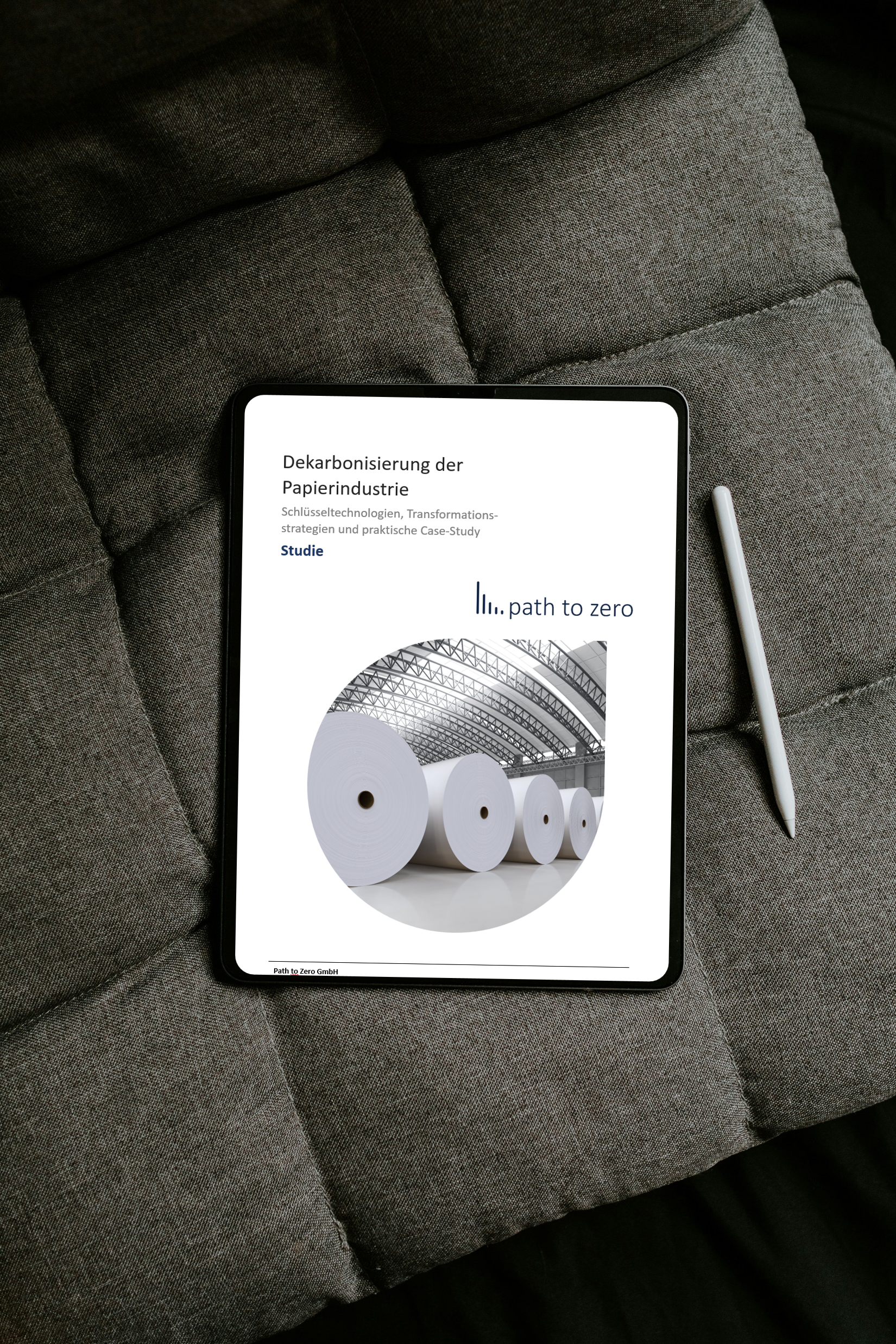Study – 17.06.2024
Decarbonization of the paper industry
Key technologies, transformation strategies and practical case studies
#CSRD, #1,5°C-Pathways, #CarbonZero
The study shows that a 1.5°C-aligned reduction pathway can be economically feasible in the paper industry and even realize cost advantages compared to the reference system.
The development of a climate transition plan and consistent climate management are becoming increasingly important in the paper industry.
The Corporate Sustainability Reporting Directive (CSRD) requires companies to demonstrate how they are transforming their value chain to achieve 1.5°C compatible business models. Failure to do so could result in reputational damage and heavy fines.
At the same time, decision makers in the paper industry are struggling with increasing cost pressures as a result of the Ukraine crisis. In this context, they are challenged to develop future strategies that
- ensure regulatory compliance,
- guarantee a cost-efficient energy supply,
- balance economic and ecological targets,
- minimize risks in the uncertain market and regulatory environment and
- use the company’s resources as efficiently as possible.
To help the industry, this study provides a concrete overview of possible technical and market measures to decarbonize the value chain in the paper industry.
The study identifies concrete pathways that will lead industry on an economically viable, 1.5°C compatible transformation path, addresses current challenges in the context of regulatory developments, and provides a concrete, practical guide to the process of creating a CSRD-compliant transformation strategy.
In a practical case study from the paper industry, various decarbonization strategies are then developed for a production site and their economic and ecological performance calculated.
If you have any questions or would like to find out more about the study, please contact Markus Bohlayer.

